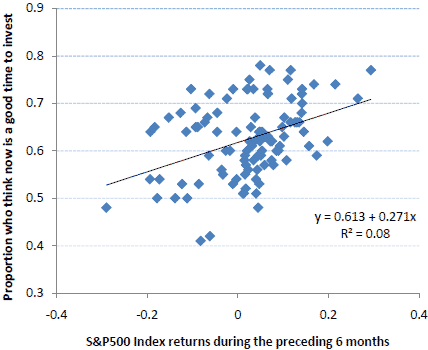How can an advisor accurately gauge and effectively respond to the risk tolerance(s) of an advisee? In their January 2010 paper entitled “Beyond Risk Tolerance: Regret, Overconfidence, and Other Investor Propensities”, Carrie Pan and Meir Statman: (1) argue that the typical questionnaire used to assess advisee risk tolerance is deficient for five reasons; and, (2) offer remedies for these deficiencies. Using historical asset class return data and results of multiple investor surveys, they conclude that:
- Advisee risk tolerance is compartmentalized, with “subtolerances” relating to distinct goals such as children’s education, retirement and extravagant self-indulgence. A segmented portfolio related to advisee goals/subtolerances may be more satisfying than an aggregate portfolio derived from global risk tolerance.
- Translation of advisee risk tolerance measurements into portfolio allocations often follows opaque rules of thumb. A quantitative linkage of risk tolerance to portfolio risk-return expectations may enhance satisfaction.
- Advisee risk tolerance tends to rise (fall) after high (low) market returns (see the plot below). Explicit accounting for this bias may enhance satisfaction.
- Advisee risk tolerance in foresight may be lower than risk tolerance in hindsight, to varying degrees for different individuals. Assessing and adjusting for advisee tendency to feel regret may enhance satisfaction.
- Advisee propensities for trust and overconfidence may distort measurement of risk tolerance. Assessing and adjusting for such propensities may enhance satisfaction.
The following chart, taken from the paper, relates past stock market returns to aggregate investor belief that “now is a good time to invest in financial markets,” as measured by monthly Gallup surveys spanning 1998 to 2007. Investors asked about their risk tolerance following high (low) past returns are likely to overestimate (underestimate) market attractiveness, swayed by exuberance (paranoia). Adjustment for this distortion of risk tolerance may enhance advisee satisfaction over the long run.

In summary, financial advisors may be able to improve advisee satisfaction by refining the typical approach to risk tolerance measurement and accommodation. The self-advised can apply such refinement to themselves.